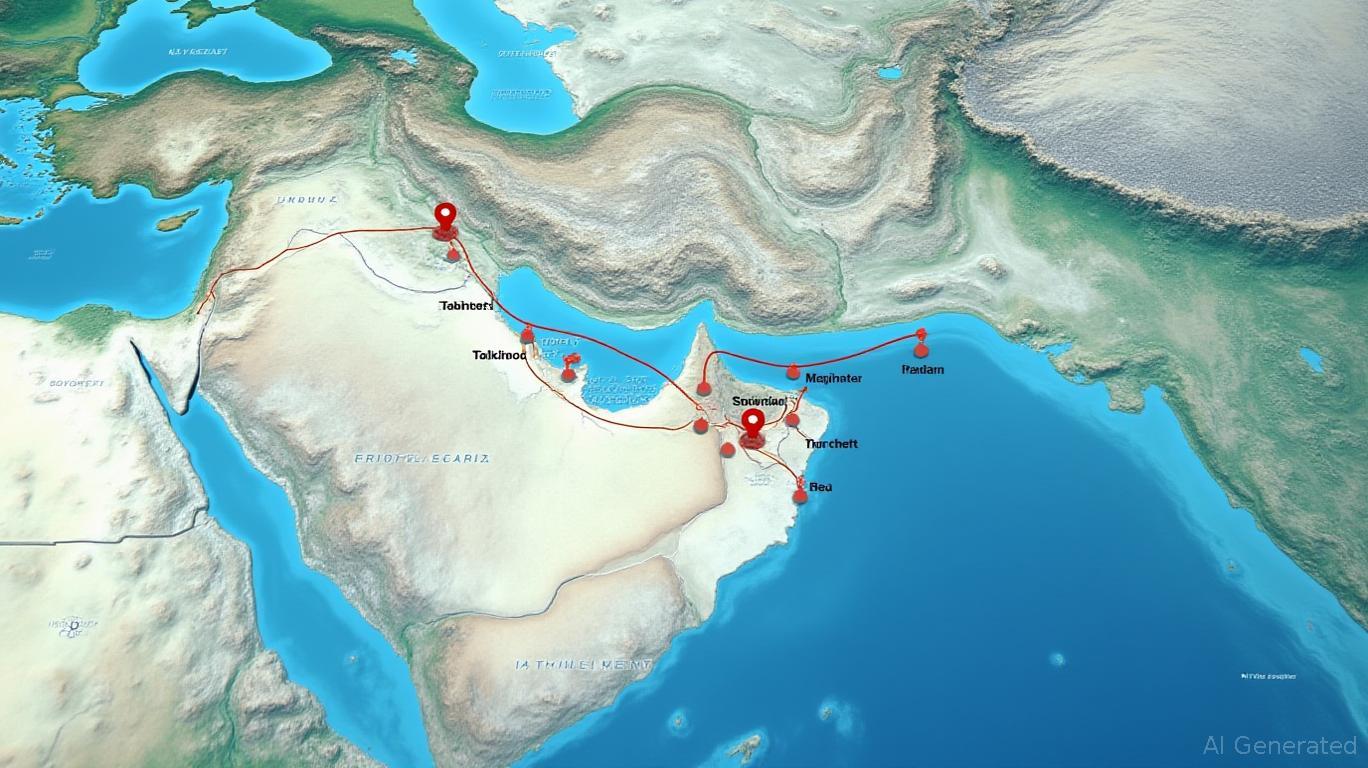Iran Talks in Oman: Navigating Geopolitical Risks and Investment Opportunities
As U.S. Special Envoy Steve Witkoff prepares to travel to Oman for high-stakes Iran talks, investors must parse the geopolitical calculus behind the negotiations. The discussions, mediated by Oman, aim to address Iran’s nuclear ambitions, regional destabilization, and U.S. sanctions—a mix of risks and opportunities for global markets.
Ask Aime: What investments should I consider amid the U.S.-Iran talks in Oman?
The Strategic Crossroads in Oman
The talks follow a fragile May 2025 ceasefire in Yemen, brokered by Oman, which halted Houthi attacks on Red Sea shipping lanes. The agreement, while praised by the U.S. as a diplomatic win, remains unverified by the Houthis themselves. Oman’s role as a neutral mediator is critical, given its geographic centrality in the Gulf and long-standing ties to both Iran and Western allies.

Investors should note Oman’s economic stakes: the country’s ports handle 40% of global oil tanker traffic through the Strait of Hormuz. A resolution to Iran-U.S. tensions could reduce piracy risks and insurance costs for maritime trade—a boon for shipping firms like Maersk (MAERSK-B.CO) and energy traders such as Vitol.
Military Posturing and Market Volatility
Recent U.S. military deployments underscore the region’s instability. In April 2025, the Pentagon positioned B-52 and B-2 bombers in Diego Garcia, alongside aircraft carriers in the Red Sea. Iran responded by showcasing its S-300 air defense systems and Qassem Basir missiles—technological advancements that could deter U.S. strikes but also escalate costs for defense contractors.
Oil prices have fluctuated between $70 and $85 per barrel since January 2025, driven by fears of supply disruptions. A prolonged stalemate risks further volatility, while a breakthrough could ease tensions and stabilize energy markets.
Nuclear Talks: The Pivotal Stakes
The core issue—Iran’s nuclear program—remains unresolved. The U.S. demands Iran halt uranium enrichment beyond 3.67%, while Tehran insists on sanctions relief first. Progress hinges on whether the Trump administration will compromise on its “maximum pressure” stance.
Analysts warn of a “cycle of escalation.” If talks fail, Iran could accelerate enrichment to weapons-grade levels, prompting U.S. or Israeli strikes—a scenario that could spike oil to $100+ and benefit energy stocks like Exxon Mobil (XOM) and Chevron (CVX). Conversely, a deal might unlock $100 billion in Iranian oil exports, pressuring prices lower and benefiting consumers in Europe and Asia.
Regional Alliances and Defense Spending
Trump’s May 2025 Middle East tour, excluding Israel, highlights the administration’s focus on Gulf allies. The U.S. is pushing Gulf states to increase defense spending under the Abraham Accords framework, boosting demand for Lockheed Martin (LMT) and Raytheon Technologies (RTX) systems.
Meanwhile, Israel’s military readiness—exemplified by its April 2025 strike on Iran’s Bandar Abbas port—adds another layer of risk. Defense contractors specializing in missile defense, such as Rafael Advanced Defense Systems (ISRAEL:RFLS), could see sustained demand.
Conclusion: A Delicate Balance for Investors
The Oman talks offer a narrow path to de-escalation but face monumental hurdles. Key data points suggest the stakes:
- Energy Markets: A deal could lower oil prices by $10–15/barrel, benefiting economies reliant on imports.
- Defense Sector: Persistent tensions could drive U.S. defense spending to $850 billion in 2026, up from $816 billion in 2025.
- Geopolitical Risk Premiums: Equity markets in the Gulf (e.g., Saudi Arabia’s TASI index) have underperformed the S&P 500 by 12% since 2023, reflecting uncertainty.
Investors should prioritize diversification: allocate to energy ETFs (e.g., XLE) for downside protection, and to defense stocks for upside in a conflict scenario. The outcome of these talks will define whether the region trends toward stability—or becomes a flashpoint for global markets.
In short, Oman’s diplomatic efforts could tip the scales toward a geopolitical thaw—or amplify the risks. The world watches, and investors must prepare for both.










